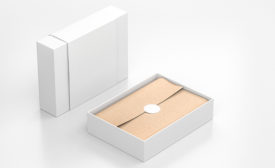Blog
6 Commonplace Errors Made with Structural Packaging Tasks
6 Common Mistakes Made with Structural Packaging Projects
Whatever the category, from beer to household cleaning products, brand owners will be seeking ways for their packaging to add value beyond point of sale. The best brands do this by expanding and enriching consumers’ experience in unique, meaningful and enduring ways – for example, through the insightful addition of ergonomic or functional benefits, or by addressing environmental sustainability issues. The role of structural packaging has arguably never been higher on brand owners and consumers’ agendas.
So, when selecting an agency to help you achieve success in three dimensions, it’s important to recognise the fundamental differences between competency in 2D branding, and 3D capability. I say this because almost every design agency will offer structural packaging services, assuming that the dimensional step is a straightforward one… when it isn’t. Often, there’s talent, conviction and willing – but also a shortage of the appropriate skills and experience, which can cause promising projects to stall when significant time, money and resources have already been spent.
To help you avoid such scenarios, here are six common mistakes brand owners and design consultancies make:
1. Assuming the go-to graphics agency has 3D expertise
The skills and approaches that ensure effective structural packaging and enriched consumer experience are many and varied, but to be honest very few branding companies that specialise in 2D branding really have them. Of course, clients seek convenience and prefer a ‘one-stop-shop’, and will readily invest in the enthusiasm their go-to agency shows for the 3D opportunity – and you can’t really blame that agency for believing in their ability and relishing the challenge – but it so often turns out to be beyond their comfort zone.
2. Seeing 3D project timescales and budgets as comparable to 2D
Once a final design is signed off, 2D graphics projects are relatively quick to implement and launch. With many brand owners being more familiar with such timescales, and their minds (understandably) often more focused on short-term goals than long-term vision, structural packaging projects can often be hurried. However, the ultimate goal of genuine and lasting standout merits longer project timescales and higher investment – not only to refine and develop conceptually, but also to translate into viable results through appropriate tooling and production.
Ultimately, for meaningful success with structural packaging projects, brand owners need to be realistic about costs and timescales, and not see them as comparable with 2D initiatives.
3. Assuming high-quality visual representations can go straight into production
In the desire to communicate ideas clearly and realistically – and with the advances in technology and software to do so – agencies can now present concepts with much more depth, detail and finesse than ever before. But this can make some clients (assuming they like what they see) feel that they’re almost ready to go into production. Several times, we’ve had to stress that ‘these are just our initial thoughts’, or ‘hold on, this is only a concept!’ It’s great to hit the mark and excite the client, but also important to explain that this is just the start of a complex process.
4. Underestimating the importance of fully transparent two-way communication throughout the process
On the journey to the best results, there are many decisions to make. From briefing to concept development, and all the way through tooling, prototyping and validation, it’s crucial to maintain the ‘design intent’ and ensure that all physical attributes, consumer benefits and brand values are manifest in the final product. The additional dimension of structural packaging offers a much wider range of opportunities to communicate and secure brand loyalty, and so requires a mutual commitment to continuous liaison throughout the project – from concept to launch – for it to be the market-changer we all want it to be.
5. Assuming it’s ‘easy’ and can be done with freelancers
Branding agencies are quick to offer structural and product design services when opportunities arise. But as 3D projects are typically fewer than 2D ones, many agencies will tend to call on freelance support for them. Not always, but often a ‘hired gun’ isn’t the right person for the job, and the best 3D freelancers tend to be booked months in advance. Also, even if they’re perfect for the task at hand, they can end up taking direction from client services bods, who may not be best suited to overseeing this aspect of 3D projects. If you do use freelance talent for structural packaging, secure it as early in the process as possible, and let them lead or influence it as a key figure on the project team, with full client and all-stakeholder contact.
6. Bolting on a 3D offer to a 2D company
On a similar note, many agencies call themselves ‘multi-disciplinary’ when really, they’re not. A genuine multi-disciplinary agency has all creative disciplines fully represented from the top-level down. Its long-term recruitment policies and working culture will therefore play a vital role in ensuring projects are led strategically and creatively by people who understand the complexities of every challenge, and can talk the right language with third-party suppliers, and all aspects of the production and supply chain. Simply hiring a couple of people and assuming they will immediately slot into an integrated structural packaging unit has been the undoing of countless agencies… and their clients’ visions.
A structural packaging and branded product design that successfully achieves positive ROI and justifies the considerable time and effort invested, must begin with the right combination of client and agency personnel, together with a clear understanding of the challenges and goals. This is perhaps the most important stage of the entire undertaking, as it can define the rest of the journey, so clients must be be rigorous when selecting the right partners. Meanwhile, agencies that genuinely want to compete in the third dimension must fully understand the commitment it requires in terms of talent and process.

